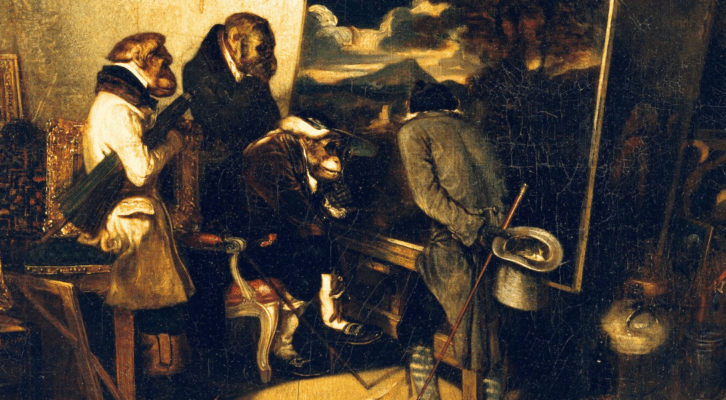Macbeth is a story of greed and revenge – and Shakespeare uses the theme of role-reversal to highlight the effects of these vices, and produce a moral. It is the story of an army officer who is told a prophecy by several witches that reveals he will become King of Scotland – a prophecy that comes to fruition when his wife learns about it and convinces him to take matters into his own hands and kill the current King. Macbeth, originally an affable and loyal nobleman, succumbs to greed, and slowly grows corrupt as he not only murders the king, but also kills anyone who comes in his way (particularly those close to uncovering what he has done). Lady Macbeth, though, who had been the evil force compelling him, loses her mind when Macbeth gains his nerve; she, haunted by guilt, deteriorates – sleepwalking and attempting to wash the blood off her hands, until she commits suicide. The inconsistent trajectory of her bloodlust, inversely related to the evolution of Macbeth’s nefariousness, illuminates the weakness of her initial, supposed strength and loud invocations of evil (the play condemns her for introducing evil in the beginning of the story, by forcing her not only to meet a tragic end, but also by forcing her to provide it). Because Lady Macbeth changes from seemingly strong to truly weak, her physical appearance must communicate a change in intensity as well as a change in identity.
In his 1937 Shakespeare and Costumes, Cumberland Clark writes extensively on a 1928 production of Macbeth, directed by Sir Barry Jackson, and starring Eric Maturin in the title role and Mary Merrall as his wife. At the time, the production was unique; it was only Jackson’s second attempt to stage Shakespearian plays entirely in contemporary costume. In this production, Macbeth is no longer a medieval Scottish warlord; rather, he is a “British army commander in the current Army List.” This added a dimension of confusion to the production, however, as “A man or a woman in everyday apparel is required to act in an everyday manner; and Macbeth in his brass hat and Lady Macbeth in her short skirt preparing to commit a diabolical and brutal murder proved more than the audience could digest” (p.239). Lady Macbeth, the initial mastermind behind the bloody scheme, is the most savage of the two characters – and it is integral that she appear convincing in her fiendish conniving. Indeed, in Jackson’s 1928 production, Mary Merrall was “saddled with the pert indignity that the short frock of 1928 conferred upon the wearer, and found it impossible to reconcile the tragic manner of the thane’s wife with her abbreviated garment.” Clark elaborates, claiming,
She was presented as a Bright Young Thing of the modern generation; and the famous speech on nursing a babe at her breast struck an unreal note now that the bottle is in favor and well-to-do women had the children they do not want over to the care of nursemaids. Not until the sleepwalking scene, when Miss Merrall was able to discard her flimsy skirt for a nightdress, did she free herself from the shackles of modern costume and come near to a convincing and moving interpretation of her character.
Although the production attempts to experiment with the femininity of the character Lady Macbeth – a valid and valiant goal, since she does forsake her womanhood in exchange for murderousness, but still maintains the persona of a demure wife until grows weak and loses her mind, – sophisticated, flirty dresses cannot outfit her if she her script remains the way Shakespeare had written it. Lady Macbeth’s costumes must reflect both sides of the character – her female form and role, and her gutsy, bloody decisions.

















